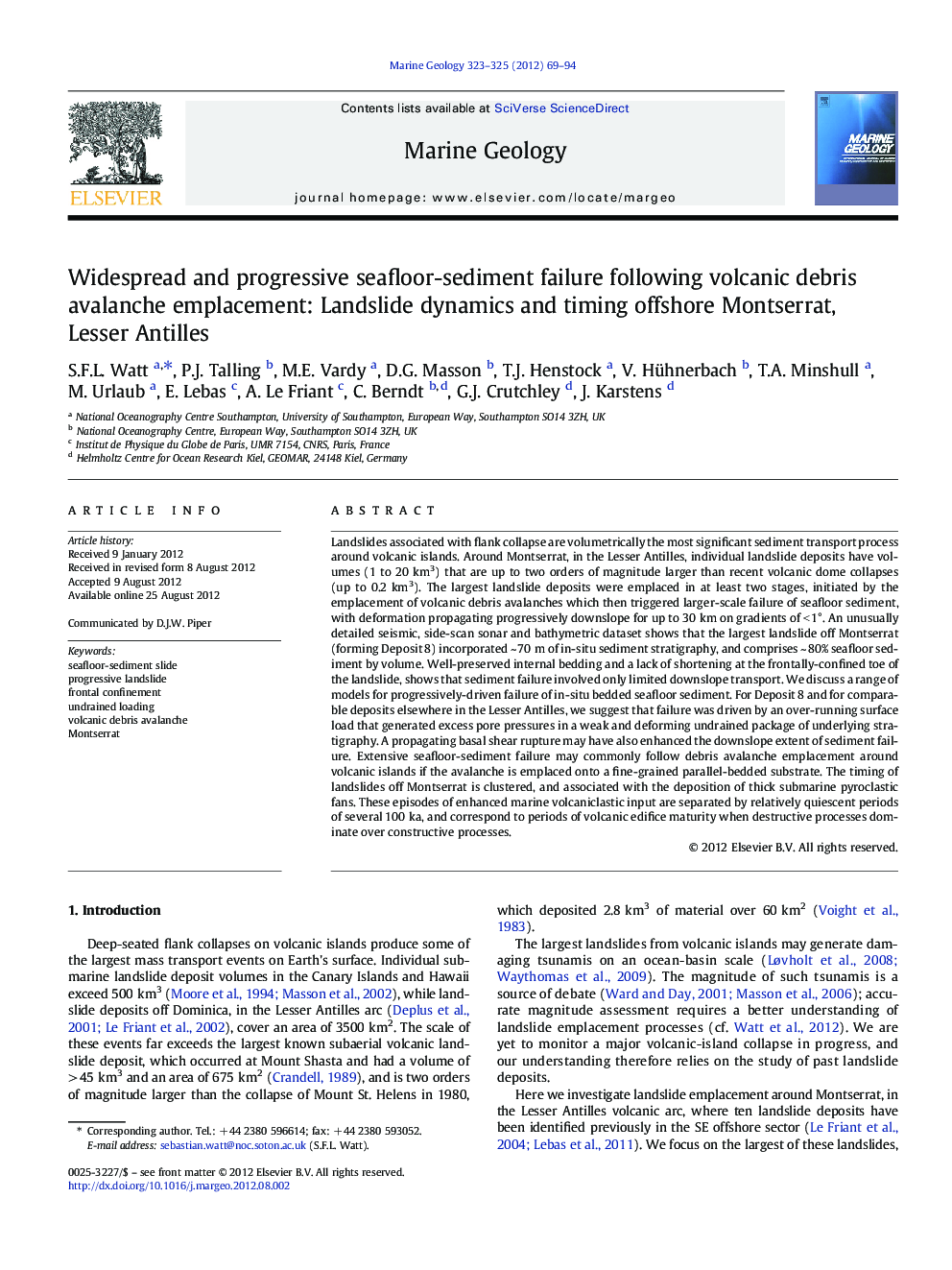| Article ID | Journal | Published Year | Pages | File Type |
|---|---|---|---|---|
| 4718542 | Marine Geology | 2012 | 26 Pages |
Landslides associated with flank collapse are volumetrically the most significant sediment transport process around volcanic islands. Around Montserrat, in the Lesser Antilles, individual landslide deposits have volumes (1 to 20 km3) that are up to two orders of magnitude larger than recent volcanic dome collapses (up to 0.2 km3). The largest landslide deposits were emplaced in at least two stages, initiated by the emplacement of volcanic debris avalanches which then triggered larger-scale failure of seafloor sediment, with deformation propagating progressively downslope for up to 30 km on gradients of < 1°. An unusually detailed seismic, side-scan sonar and bathymetric dataset shows that the largest landslide off Montserrat (forming Deposit 8) incorporated ~ 70 m of in-situ sediment stratigraphy, and comprises ~ 80% seafloor sediment by volume. Well-preserved internal bedding and a lack of shortening at the frontally-confined toe of the landslide, shows that sediment failure involved only limited downslope transport. We discuss a range of models for progressively-driven failure of in-situ bedded seafloor sediment. For Deposit 8 and for comparable deposits elsewhere in the Lesser Antilles, we suggest that failure was driven by an over-running surface load that generated excess pore pressures in a weak and deforming undrained package of underlying stratigraphy. A propagating basal shear rupture may have also enhanced the downslope extent of sediment failure. Extensive seafloor-sediment failure may commonly follow debris avalanche emplacement around volcanic islands if the avalanche is emplaced onto a fine-grained parallel-bedded substrate. The timing of landslides off Montserrat is clustered, and associated with the deposition of thick submarine pyroclastic fans. These episodes of enhanced marine volcaniclastic input are separated by relatively quiescent periods of several 100 ka, and correspond to periods of volcanic edifice maturity when destructive processes dominate over constructive processes.
► Marine volcanic debris avalanche emplacement can lead to much larger sediment failure. ► Failure is progressive, through in situ-strata, and frontally non-emergent. ► Sediment failure propagates on very low gradients, dominating final deposit volume. ► Process involves undrained loading and/or shear rupture, and may be repeated widely. ► Landslide timing reflects timescales of volcanic edifice growth and destruction.
